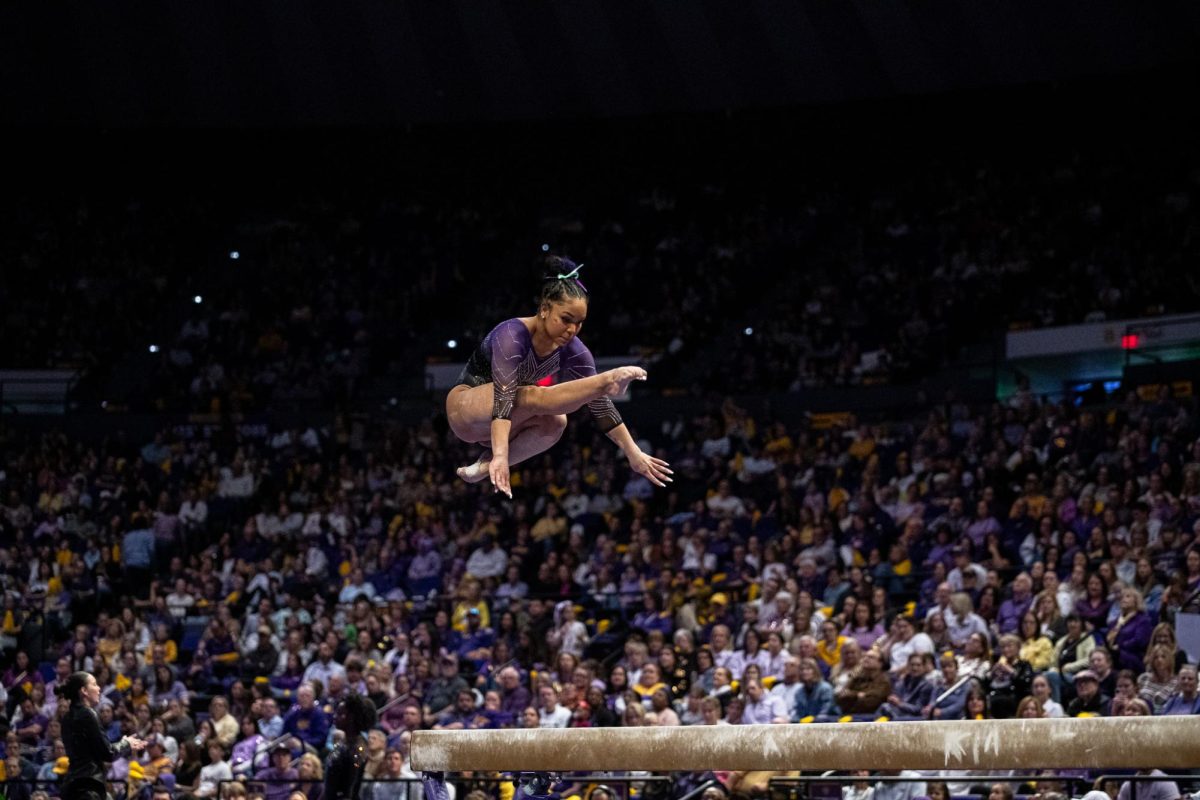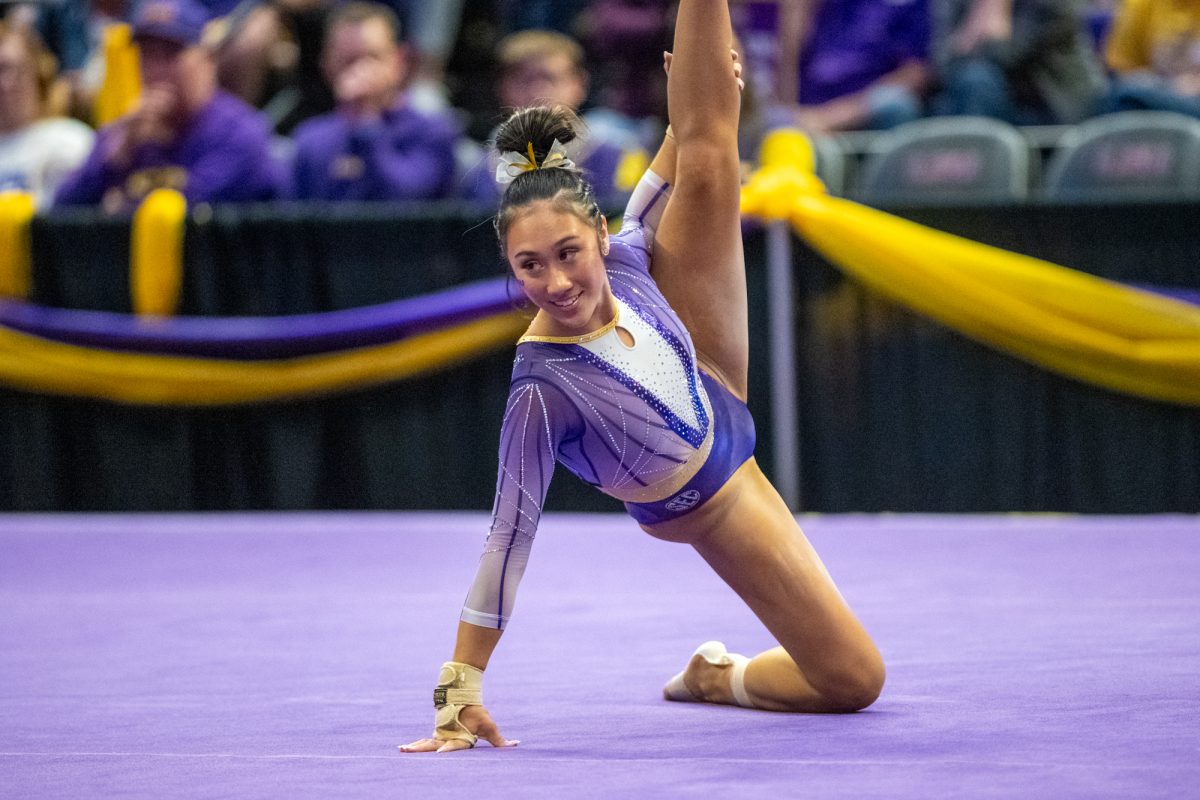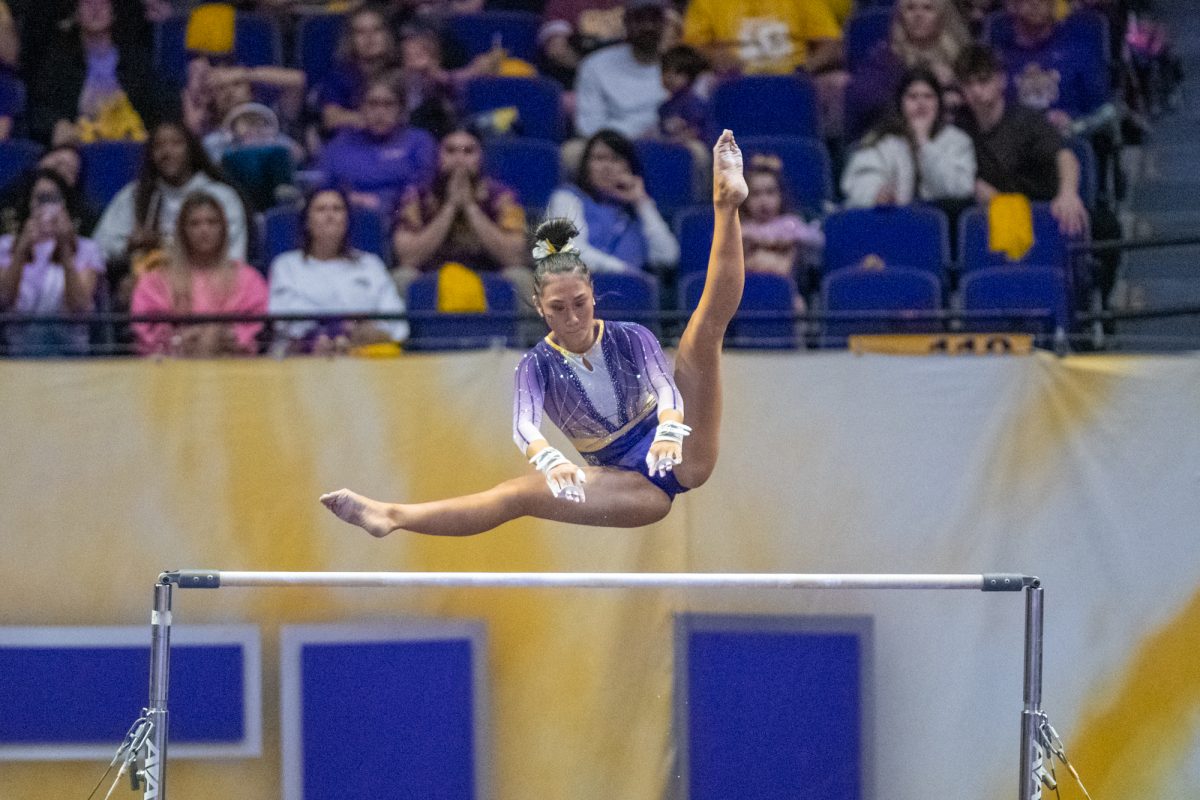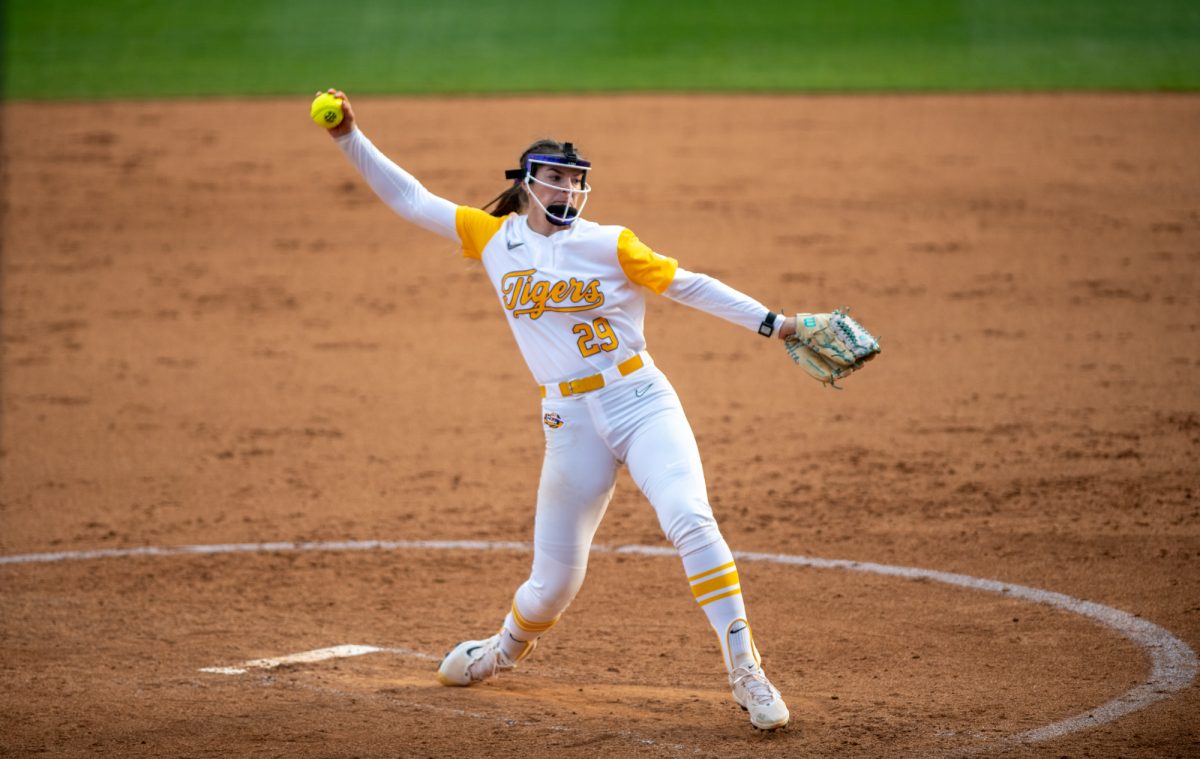Are you trying to get into NCAA gymnastics but struggling to understand exactly how scoring works?
Here’s everything you need to know about how the sport’s scores in anticipation of the No. 2 LSU Tigers’ face-off with the No. 1 Oklahoma Sooners this Friday night at the PMAC.
After winning the national championship last year, gymnastics has been quite a popular sport among LSU students, with names like social media influencer Olivia Dunne, 2024 NCAA Champion Haleigh Bryant and Filipino Olympian Aleah Finnegan.
Every week, gymnasts gather alongside their teammates competing against another school in hopes of earning a perfect 10—the highest possible score for a collegiate routine—something that only five gymnasts within the NCAA have achieved so far this season.
Only one of those gymnasts, all-around redshirt senior Helen Hu, is a member of the SEC, competing for the Missouri Tigers. Hu received a perfect 10 for her balance beam routine against the Oklahoma Sooners.
So how is a perfect 10 achieved?
Depending on the event, some have a different start value, essentially where a gymnast will start receiving deductions.
The vault’s start value fluctuates depending on how complicated the routine is.
If a gymnast starts a Yurchenko one and a half, meaning they have delivered a whole twist plus a half twist while taking flight on the vault, their start value is 10.000, and they can receive deductions for any imperfections in their routine.
A full Yurchenko on the vault is where a gymnast starts her routine with a round-off on the springboard and a back handspring on the vaulting table, with a somersault or even a flip worked in a while in flight as part of their salt.
A successful Yurchenko awards the gymnast a start value of 9.950.
When referring to the other three events, uneven bars, balance beam and the floor, as long as the gymnast fulfills basic requirements specific to each event, they start with a 9.400 and can reach a 10 by skills shown in different difficulty levels.
Some of these skills are specific to the NCAA, like a tenth of a point awarded for a single bar release on uneven bars.
Gymnasts may also face penalties for not completing a special requirement on a routine, which can deduct up to two-tenths of a point.
So, to reach a perfect 10, a gymnast must perform complex skills, but the more difficult the skill is, the more room there is for error, which can result in deductions.
Believe it or not, there are also two different types of deductions: composition deductions and execution deductions.
Composition deductions surround the minimum requirements a gymnast must fulfill depending on the event; if a gymnast doesn’t meet these requirements, they are deducted a tenth of a point, keeping that perfect 10 just out of reach.
An example of a requirement that must be met on the balance beam is the number of saltos delivered.
Gymnasts must perform both a backward and forward salto on the beam; if they fail, they receive a composition deduction by delivering one, not the other or none.
Execution deductions, on the other hand, focus on any errors the gymnast makes while performing their routine.
These can be taken in any form, landing or performance missteps.
If a gymnast lands with bent knees? That’s a deduction up to three-tenths of a point (0.300).
What about if they fall during their routine? Half a point is deducted (0.500).
You may tell yourself that something as simple as flexed feet couldn’t receive a deduction, but you’d be wrong. Having flexed feet is minus 0.050 of a point off of a routine.
While there has been controversy around scoring deductions taken at the judges’ discretion recently, execution deductions usually remain consistent per routine.
For a more detailed chart on execution deductions, you can visit the NCAA’s website to find out how small or large a mistake can keep a gymnast from a perfect 10.









